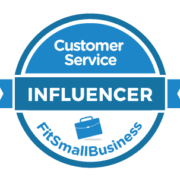Top 5 Strategic Priorities of B2B Customer Management in 2016
Being “Customer Attuned” is all about building better B2B customer relationships based on trust, working together for mutual commercial benefit. We carried out an international research study over the summer to explore what will be the defining characteristics of B2B customer management (CM) strategy.
The Customer Attuned Assessment (CAA®) model illustrated has twelve “golden threads” of critical B2B capability across knowledge, strategy, planning, implementation & results.
The research explored which of these capability areas are of most strategic importance in different sectors. They are ALL IMPORTANT, but each business needs to decide which of them will be defining characteristics of ITS OWN corporate DNA.
Senior professionals with CM responsibility and described a desired state for each capability area. Respondents prioritised them and said why their number one was chosen.
Loyalty is king
Despite all the hype about new channels and media, Relationship and Value Building (Farming) came out as of primary importance overall. It was in the top 3 of 50% of respondents and confirms what we passionately believe about customer management in B2B – that it’s about building long-term quality relationships based on trust; working together for mutual commercial benefit. An executive said: “Given the propensity for a small number of large, influential, and profitable customers dictating the fortunes of the business, then the investment behind customer connectivity & interweaving strategies becomes a clear priority” (Consumer Durables, UK)
People & Competencies
Staff interpersonal skills and account team stability will remain of vital importance within B2B: “Excellent customer satisfaction cannot be delivered unless employees are happy, emotionally engaged, knowledge empowered and willing to put in discretionary effort to deliver the company’s commitments” (Non-profit, India)
Brand & Proposition
This was the thread that was rated as no. 1 priority by the highest proportion of individuals (but only 35% included it in their top 3 so it came out 3rd overall), showing that many B2B companies still have significant work to do in CVP (customer value proposition) development: “We are in the process of re-defining our proposition and making it more customer-centric. Having been product-led for decades, we have to deliver what customers want, not what we want to supply” (Auto, UK)
The next two priorities relate to acquisition:
Hunting New Business
This was rated 4th overall and indeed it was top priority in the Americas and in the Telco & Tech sector. This confirms that many B2B companies are strategically aiming to up their game in customer acquisition: “Hunting drives our growth, which is key to our business model. We need to grow to be able to handle increasing complexity in the solutions we offer and acquire larger clients” (Technology, pan-Americas).
Nearly half of the respondents who rated Hunting as top priority also had Farming in their top three, whereas only 12% of the vice versa situation occurred (those prioritising Farming also placing Hunting in the top 3). These companies will need to be incredibly well led, organised and measured to create a culture that is effective at both.
Target Markets & Sectors came out as 5th priority overall in the research. It is about how B2B companies decide which markets & sectors to enter, grow, reduce exposure, or exit: “Focusing on appropriate target markets is the starting point for an effective business model and best use of resources” (Banking, Canada)
So what?
- The top 3 priorities should all be seen as crucial for companies to be corporately competent in next year. There is a risk of a business being left behind if it fails to be at least on-par with good practice in these areas because B2B companies overall are strategically aiming to excel in them
- The threats posed by competitors’ acquisition strategies and activities must be taken seriously and responded to accordingly. Strategically this means either bettering their strategies if hunting is also your primary aim, or countering their targeting with excellent loyalty building capabilities
- Companies should consider their priorities and benchmarks for each golden thread and strategically decide where they need to be in each aspect of CM – below average (!); on-benchmark; upper quartile; or top decile. Some may be inspired to beat the report’s top scores and establish clear competitive advantage!
The full report presents the results by sector, region, size of business & seniority of role; what peers are saying about their priorities; capability benchmarks; and what to consider for your defining characteristics of customer management strategy.
Download it here for free
- The Customer Attuned “Infinity Loop” of Customer Centricity Explained - December 8, 2023
- Protected: Partnership Survey 2023 Results - July 11, 2023
- Truth Loyalty Webinar with Peter Lavers - July 7, 2021



